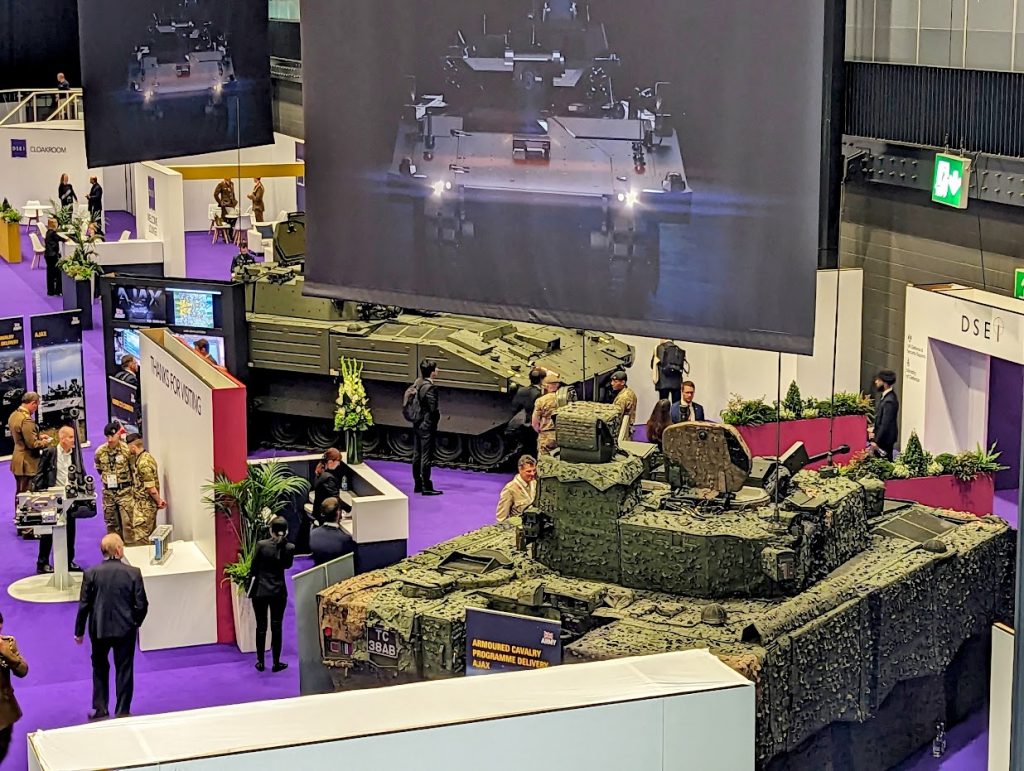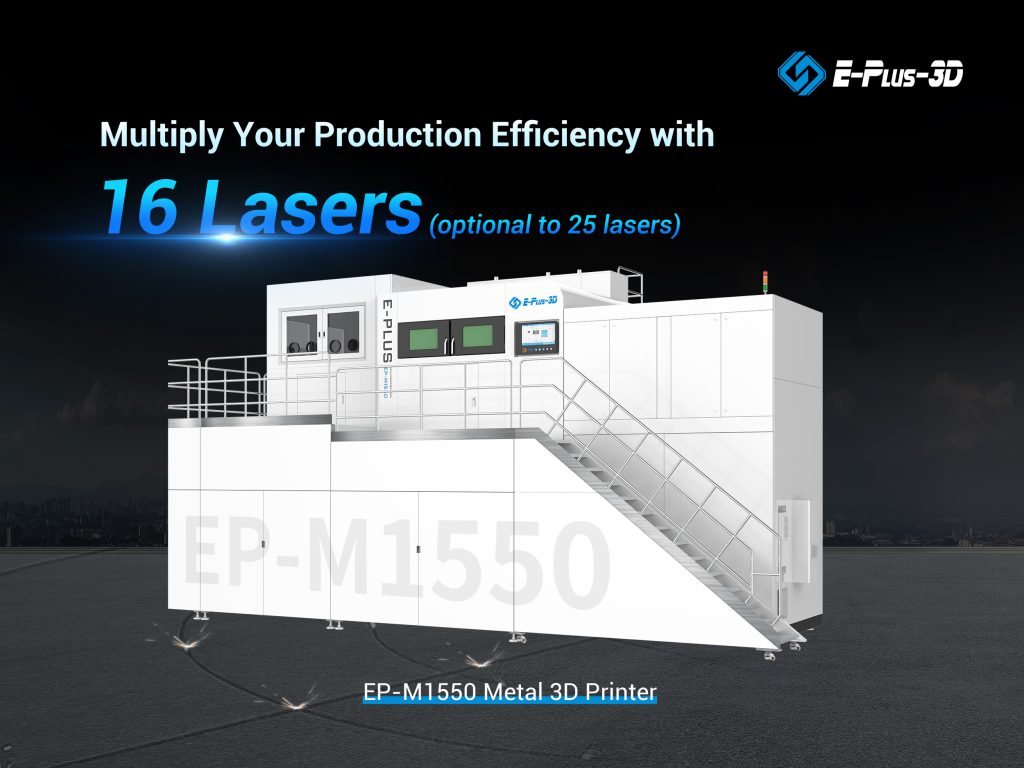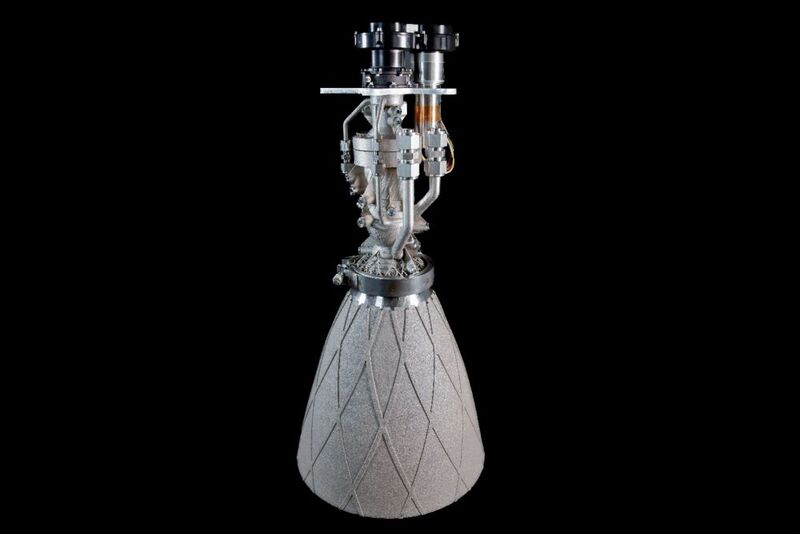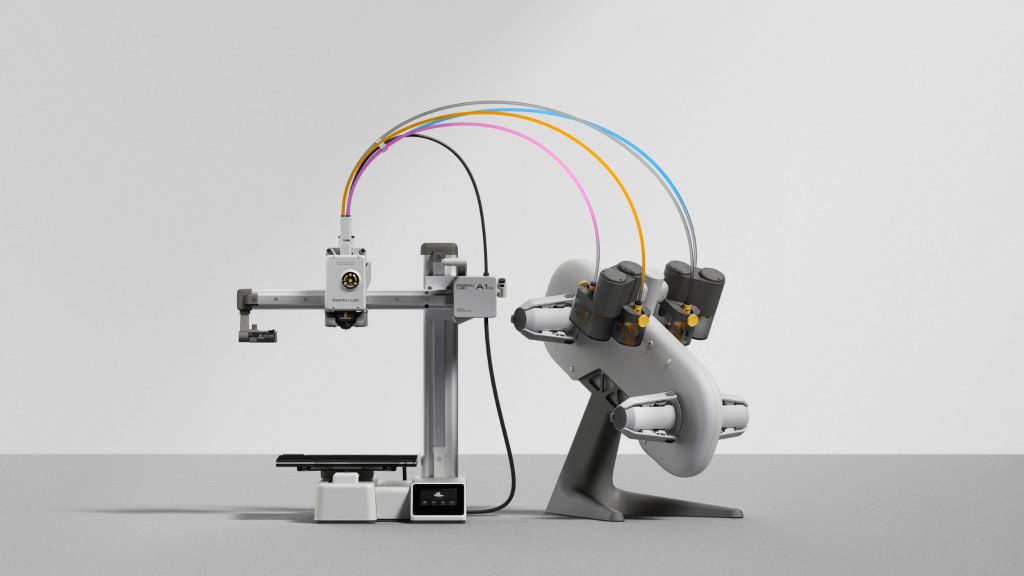Defense applications took center stage in September 2023. 3D Printing Industry attended Defense and Security Equipment International (DSEI), Europe’s largest defense and security expo, to see how the sector is leveraging additive manufacturing.
All the 3D Printing News from 2023.
Elsewhere, the ongoing Stratasys, 3D Systems, and Desktop Metal saga took another twist, and the burgeoning ‘laser wars’ saw the launch of two new multi-laser metal 3D printers.
Read on for September’s top 3D printing news stories from Lockheed Martin, Velo3D, Bambu Lab, Farsoon Technologies, Eplus3D, BEAMIT, Agile Space Industries, Airbus, and more.

Additive manufacturing in the defense industry
Taking place every two years, DSEI is a London-based four-day event showcasing the latest defense hardware and military technology. With the likes of BAE Systems, MBDA, Leonardo, and Lockheed Martin exhibiting, this year’s event saw several companies leveraging additive manufacturing.
During a panel discussion headed by Andy Barnes from the Manufacturing Technology Centre’s (MTC), a number of notable additive manufacturing use cases for defense were highlighted.
For instance, Dr. Ross Trepleton, Associate Director – Technology Strategy at MTC, pointed to a GE midframe structure eliminating the need for 300 parts from 50 different sources. Trepleton highlighted a 3D periscope system developed with Babcock International Group and the Ministry of Defense (MoD). This system is more economically feasible via additive manufacturing than traditional methods.
However, key challenges associated with additive manufacturing were also highlighted. For instance, intellectual property sensitivity and classified information was said to limit collaboration required to grow the technology.
However, Trepleton stated the MTC witnessed a positive shift post-COVID, with a growing realization that openness can yield greater results. As such, the defense industry is witnessing an increasing level of openness previously unseen in the sector
Away from DSEI, Aerospace and defense contractor Lockheed Martin, metal 3D printer manufacturer Velo3D and aerospace part inspection company Vibrant announced a collaboration with the US Department of Defense’s (DoD) LIFT Institute. This partnership saw the companies test and assess the validity of 3D printed hypersonic ramjet engines.
These engines possess very few moving parts, and incorporate a complex internal structure, unlike their turbojet counterparts. Once 3D printed using Velo3D’s laser powder bed fusion (LPBF) technology, the ramjets underwent acoustics-based Process-Compensated Resonance Testing (PCRT). The success of this initial testing stage will next see the team consider the fatigue behavior of 3D printed components and move towards “born-certified” parts.

Merger and acquisition uncertainty
In August there was hope that the persistent 3D Systems, Stratasys, and Desktop Metal merger and acquisition saga could be finally reaching an amicable conclusion.
However, during an Extraordinary General Meeting of Shareholders (EGM) held on 28 September, 78.6% of Stratasys’ shareholders voted against the company’s proposed merger with Desktop Metal. As a result, Stratasys’ deal to acquire the Massachusetts-based 3D printer manufacturer was terminated, with Stratasys instead “exploring strategic alternatives.”
Prior to the vote, 3D Systems had a revised proposal to purchase Stratasys rejected, with Stratasys disputing the valuation 3D Systems placed on the deal. The revised proposal delivered to Stratasys valued the company at $27 per share, according to 3D Systems.
“We listened to shareholder feedback and made a strong effort to reach a friendly transaction but it seems there is no price that would satisfy the Stratasys Board,” stated 3D Systems’ President and CEO Dr. Jeffrey Graves.

3D printing ‘laser wars’
2023 witnessed the emergence of a ‘laser wars,’ with a growing number of companies producing metal 3D printers with ever-increasing numbers of lasers, and larger build volumes.
One such company is Chinese 3D printer manufacturer Farsoon Technologies, which announced the development of its 16-laser FS1521M 3D printer series in September. The FS1521M is a Laser Beam Powder Bed Fusion (PBF-LB) 3D printer boasting a build chamber diameter of 1530mm and an 850mm Z-axis height. Farsoon also offers a FS1521M-U variant, increasing the Z-axis to 1650mm. The 3D printer’s 16, 500-watt lasers are said to boost productivity for high-volume fabrication.
Similarly, Chinese 3D printer manufacturer Eplus3D introduced its EP-M1550 metal 3D printer, the largest metal powder bed fusion system on the market. The EP-M1550 possesses a 3D printing volume of 1558 x 1558 x 1200 mm, with the option to extend the height to 2000mm.
The 3D printer can be customized to include 16 500W or 700W lasers. What’s more, customers can choose to extend their EP-M1550 to include 25 lasers. The result is an impressive build rate of up to 650 cm³/h.

Growing applications in space and aerospace
September’s 3D printing news was populated by a number of additive manufacturing developments in the space and aerospace sectors. Italian 3D printing service bureau BEAMIT SpA announced that it is providing aerospace parts 3D printed in NASA-qualified AlSi7Mg aluminum for the Cygnus program. This program works to resupply the International Space Station (ISS) and advance space exploration using Northrop Grumman manufactured Cygnus spacecraft.
The AlSi7Mg components are NADCAP certified, and reportedly exceed NASA’s minimum material requirements. To produce and supply the parts, BEAMIT is collaborating with Power Electrical Resistor manufacturer Telema, Italian electronics company Blu Electronic, and aerospace manufacturer Thales Alenia Space.
Elsewhere, Aerospace propulsion system developer Agile Space Industries announced that it is pursuing certification of Ni625 powder from Industrial 3D printing materials manufacturer 6K Additive. Agile hopes to use this material for customer space applications, including the production of 3D printed critical rocket parts.
In aviation, an academic collaboration between global aircraft OEM Airbus, Cranfield University spin-out WAAM3D, and 14 other partners was launched to develop lower-emission 3D printed airplane landing gear components. Called I-Break (Landing Gear Industrial Breakthroughs), this £22.5 million project is set to be completed in 2026.

New products in the Desktop 3D printing market
Finally, September saw a number of new desktop 3D printers hit the market. One company which rose to prominence in 2023 was Desktop 3D printer manufacturer Bambu Lab. The company launched the A1 mini and AMS lite, an FDM multi-color 3D printer, in September.
With a compact 180 x 180 x 180 mm build volume, the A1 mini offers 4-color capability and seeks to make multi-color 3D printing more accessible. The 3D printer also offers 4-color capability, automatic calibration, active flow rate compensation, and active motor noise cancellation.
Elsewhere, Hong Kong-based 3D printer manufacturer Peopoly launched the Magneto X, the world’s first Maglev-based desktop FFF 3D printer. Maglev (short for magnetic levitation) technology is usually used for high-speed train and low-noise aerospace applications.
Peopoly’s 3D printer replaces traditional belts and pulleys with a proprietary MagXY magnetic linear motor system for the X and Y axes. This is said to enable high-performance 3D printing, combining fast 3D print speeds of up to 1200mm/s with high precision and reliability. Measuring just 55 x 61 x 70 cm, the Magneto X brings Maglev 3D printing capabilities to the desktop.

Subscribe to the 3D Printing Industry newsletter to keep up to date with the latest 3D printing news. You can also follow us on Twitter, like our Facebook page, and subscribe to the 3D Printing Industry Youtube channel to access more exclusive content.
Are you interested in working in the additive manufacturing industry? Visit 3D Printing Jobs to view a selection of available roles and kickstart your career.
Featured image shows DSEI 2023. Photo by Michael Petch.

